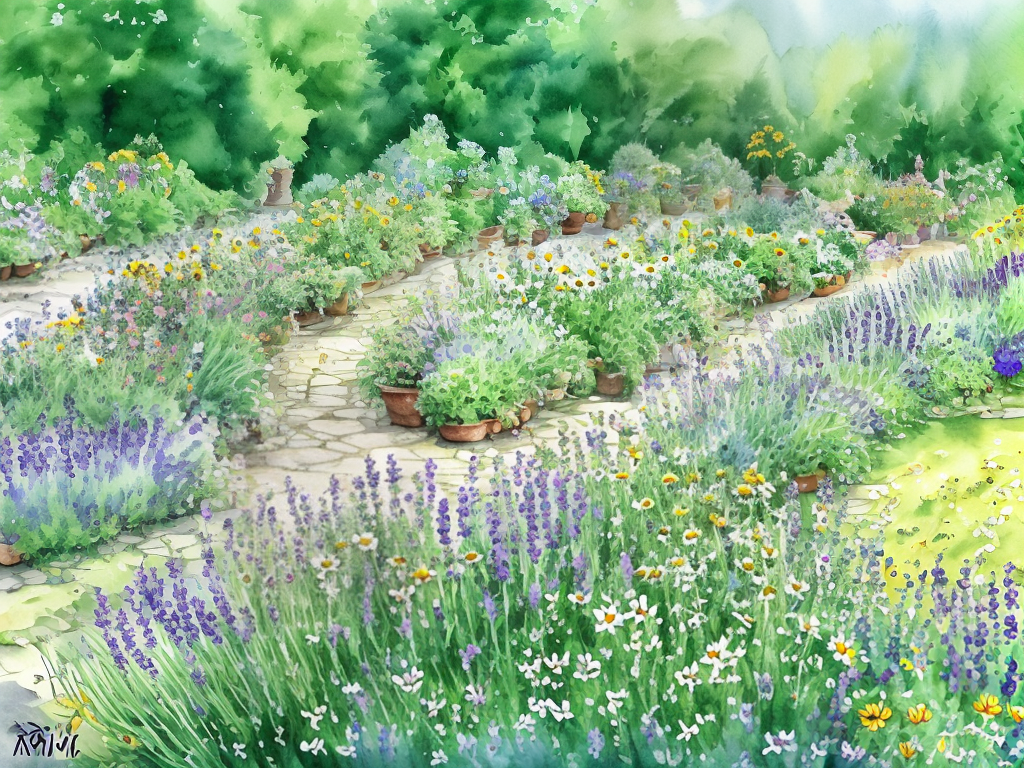Are you interested in growing a herb garden for medicinal purposes? If so, you are not alone. More and more people are discovering the benefits of cultivating their own medicinal herbs at home. Not only is it a cost-effective way to access natural remedies, but it can also be a fun and rewarding hobby.
In this article, we’ll explore the top 10 medicinal herbs to grow in your garden, as well as tips and tricks for getting started.

Choosing the Right Herbs
When it comes to choosing which herbs to grow, there are many factors to consider. Here are some of the most important ones:
1. Climate and Soil
Different herbs have different growing requirements. Some prefer full sun, while others thrive in the shade. Some require rich, moist soil, while others can tolerate dry conditions. Make sure to choose herbs that are well-suited to your climate and soil type.
2. Health Benefits
Consider which health conditions you would like to address with your herbs. For example, feverfew is excellent for preventing migraines [1], while echinacea is a super immune-booster [2]. Make a list of the herbs that are most beneficial for your needs.
3. Ease of Growth
If you are new to gardening, it’s a good idea to start with herbs that are easy to grow. Chamomile, yarrow, lemon balm, peppermint, and echinacea are all safe and effective herbs that are simple to cultivate [2].
Top 10 Medicinal Herbs to Grow
Now that you have a better idea of what to look for in medicinal herbs, let’s explore the top 10 herbs to grow in your garden:
1. Feverfew
Feverfew is an excellent herb for preventing migraines. It is also easy to grow and maintain, making it a great choice for beginners [1].
2. English Lavender
English lavender is well-known for its ability to induce sleep and relaxation. It is also easy to grow and adds a lovely fragrance to your garden [1].
3. Chamomile
Chamomile is a soothing, calming herb for the nerves and an upset stomach. It is also easy to grow, needs full sun, and can grow up to 18 inches tall [2].
4. Yarrow
Yarrow has many health benefits, including reducing inflammation and fever. It also attracts pollinators to your garden and is relatively easy to grow [2].
5. Lemon Balm
Lemon balm is a natural anxiety and stress reliever. It also has antiviral properties and can be used to treat cold sores and other viral infections. Lemon balm is easy to grow and can tolerate both sun and shade [2].
6. Echinacea
Super immune-booster echinacea products are among the top-selling herbs in health food stores. You can use the roots, seeds, and flowers of the echinacea plant to create teas and tinctures that can help treat upper respiratory infections, sore throats, skin wounds, colds, urinary tract infections, flu, and yeast infections [4].
7. Peppermint
Peppermint is a natural remedy for digestive issues like bloating, gas, and nausea. It also has anti-inflammatory and pain-relieving properties. Peppermint is easy to grow and can be used fresh or dried for teas and other remedies [2].
8. Sage
Sage has a wide range of medicinal benefits, including aiding digestion, relieving cramps, reducing diarrhea, and acting as a salve for cuts and burns. It also has antibacterial properties and can reduce inflammation and swelling. Sage is easy to grow and can be used fresh or dried [9].
9. Comfrey
Comfrey has a long history of use in medicine and was grown in infirmary gardens for its power to heal wounds and inflammations and help set broken bones [10]. It needs rich, moist, alkaline soil and generally prefers shady areas. Comfrey can grow up to 120cm tall and has long, hairy, deep-green leaves.
10. Calendula
Calendula is known for its anti-inflammatory and wound-healing properties. It is also great for the skin and can help soothe rashes, eczema, and other irritations. Calendula grows like crazy in summer and attracts beneficial insects to your garden [5].
Tips for Growing a Medicinal Herb Garden
Now that you have an idea of which herbs to grow, here are some tips for getting started:
1. Choose the Right Location
Most medicinal herbs require at least six hours of sunlight a day, so make sure to choose a sunny location for your garden. If you don’t have a lot of space, consider growing herbs in pots [3].
2. Prepare the Soil
Before planting your herbs, make sure to prepare the soil by adding compost or other organic matter. This will help provide the nutrients your plants need to thrive [6].
3. Water Regularly
Most herbs need regular watering, especially during hot weather. Make sure to water your plants deeply and regularly to keep the soil moist [7].
4. Harvest at the Right Time
Different herbs require harvesting at different times. Some can be harvested all season long, while others may take a few years before they can be harvested. Make sure to research each herb to know the best time to harvest and how to prepare it for medicinal use [6].
5. Learn How to Preserve Your Herbs
After harvesting your herbs, you’ll need to know how to properly preserve them for future use. Some herbs can be dried and stored in a cool, dry place, while others can be frozen or made into tinctures or oils. Make sure to research each herb to know the best method of preservation [6].
Conclusion
Growing a medicinal herb garden can be a fun and rewarding hobby that provides you with natural remedies for various health issues. By choosing the right herbs, preparing the soil, and providing adequate care, you can create a thriving garden that will provide you with an abundance of herbs to use in your home remedies.


